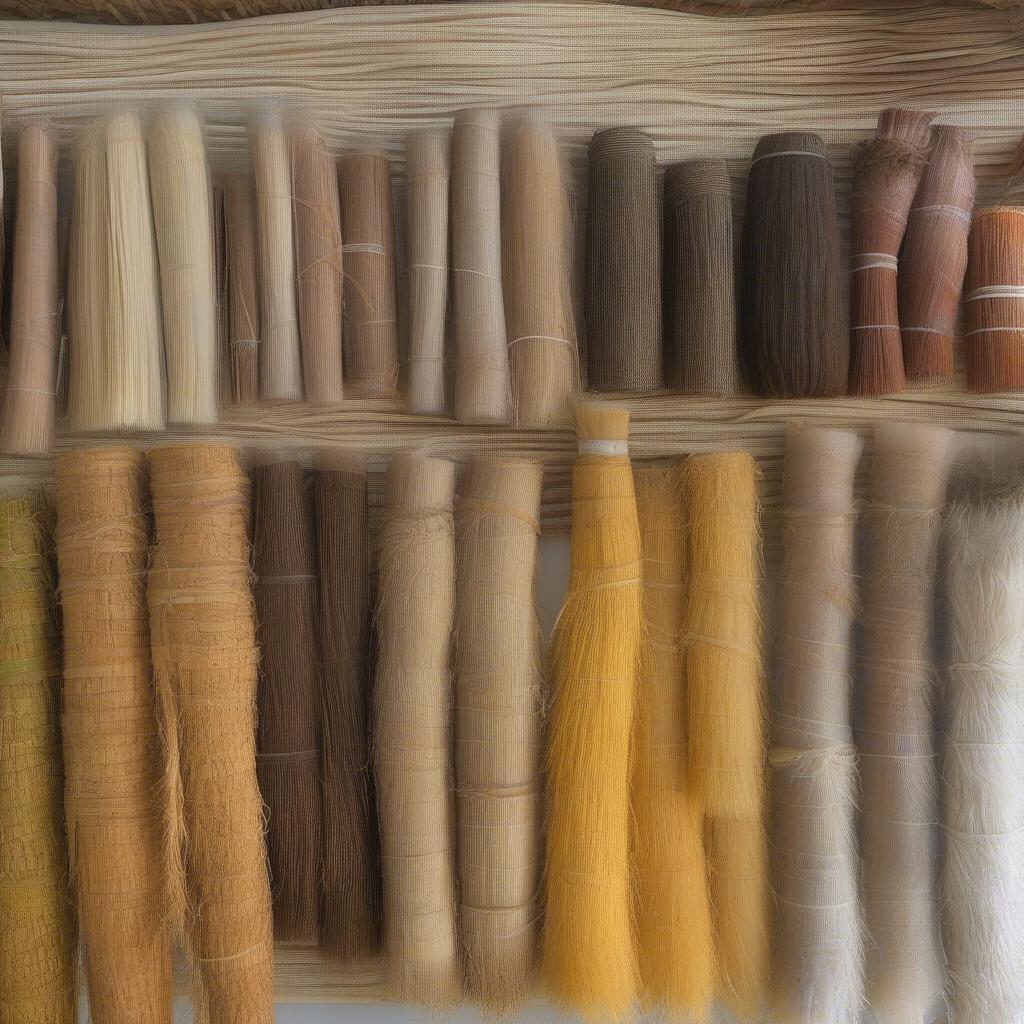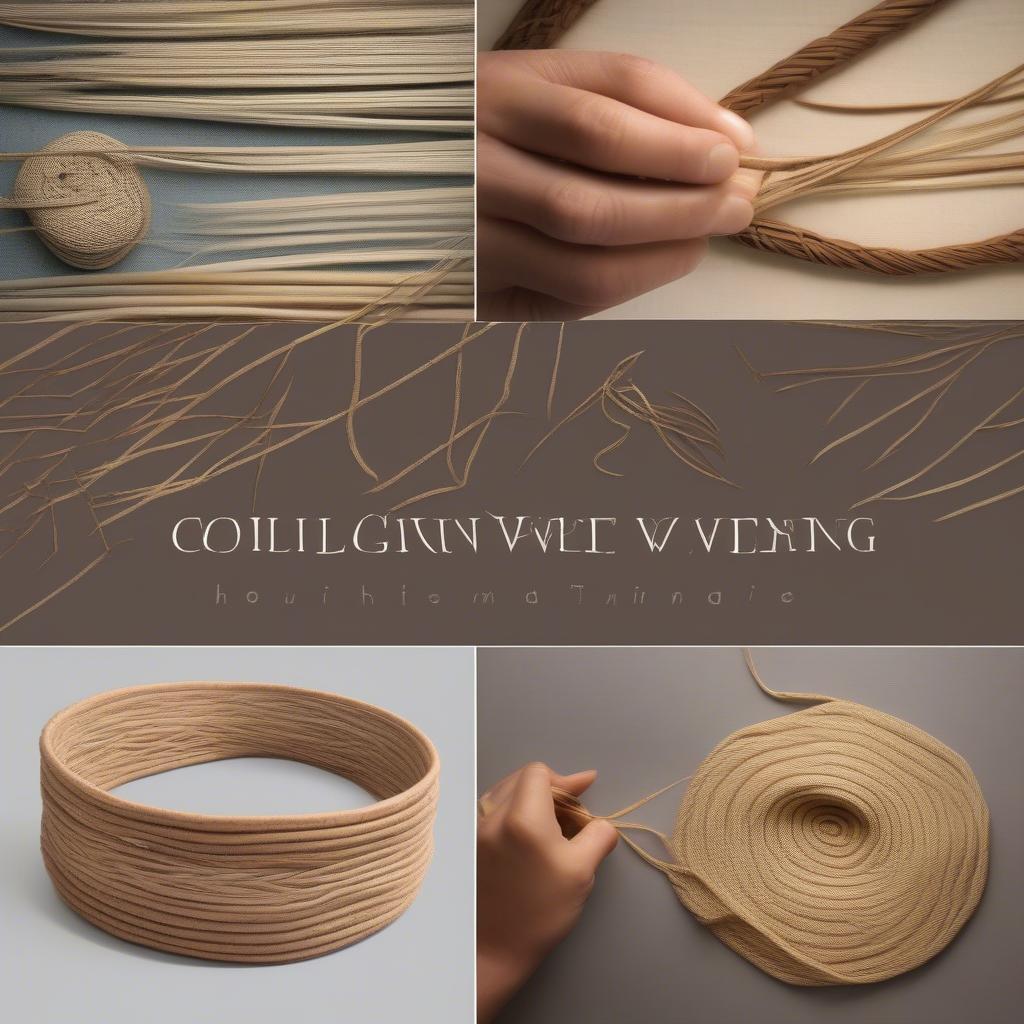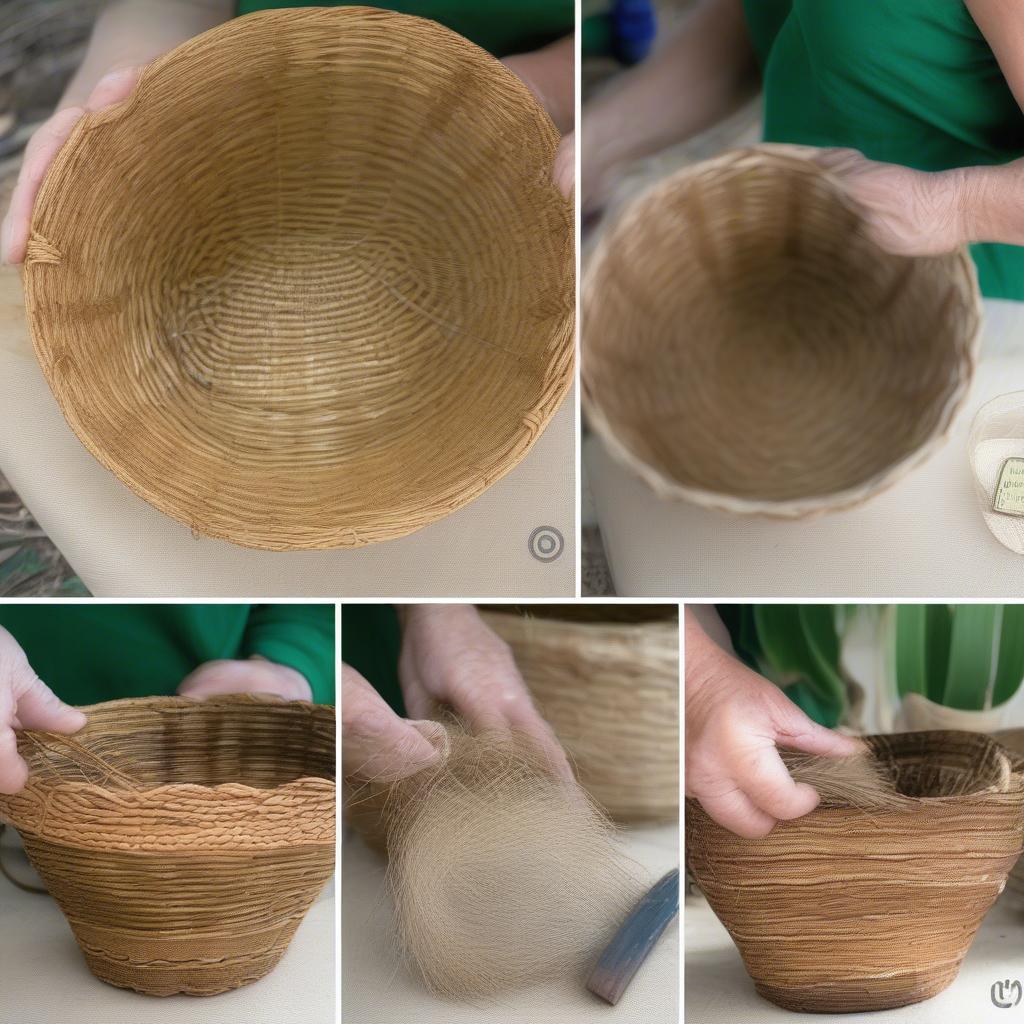Basket Weaving
Palm Tree Strand Used for Weaving Baskets: A Comprehensive Guide
Palm tree strands are a popular and versatile material used for weaving baskets across various cultures. From the durable raffia palm to the flexible date palm, these natural fibers provide strength, beauty, and sustainability to handcrafted baskets. This guide delves into the different types of palm strands, their unique properties, and their significance in the world of basket weaving.
Discovering the Versatile Palm for Basket Weaving
Palm trees, iconic symbols of tropical landscapes, offer more than just picturesque beauty. Their leaves, when processed, provide strong, flexible strands ideal for basket material weaving. These strands vary in texture, color, and durability depending on the palm species, opening a world of possibilities for artisans. From simple, functional baskets to intricate works of art, palm strands offer a sustainable and beautiful medium for creating unique woven pieces.
Types of Palm Strands Used in Basketry
Various palm species offer unique fibers for basket weaving. Raffia, known for its strength and supple nature, is a popular choice for african basket weaving techniques. Date palm leaves, once dried and processed, produce robust strands suitable for larger baskets and mats. Other palms, like the coconut palm, also contribute their fibers to this craft, each adding its distinct character to the finished product. Choosing the right palm strand depends on the desired basket’s size, function, and aesthetic.
 Different Palm Tree Strands for Basket Weaving
Different Palm Tree Strands for Basket Weaving
Preparing Palm Strands for Weaving
Before the weaving begins, palm strands undergo a careful preparation process. This often involves drying the leaves, stripping them into strands of the desired width, and sometimes dyeing them to achieve specific colors. The preparation method can significantly impact the final product’s durability and appearance. For instance, boiling the strands can enhance their flexibility and colorfastness.
Weaving Techniques with Palm Strands
Basket weaving with palm strands encompasses a rich array of techniques, passed down through generations in many cultures. Coiling, twining, and plaiting are just a few examples, each producing distinct patterns and textures. Some techniques require simple tools, while others demand more specialized equipment. Mastering these techniques allows artisans to create complex designs and achieve remarkable detail in their basketry.
What are the common palm tree strand weaving patterns?
Common palm tree strand weaving patterns include:
- Coiling: A technique where a foundation of bundled strands is spiraled and stitched together.
- Twining: Interlacing two or more flexible strands around a rigid frame.
- Plaiting: Similar to braiding, plaiting involves weaving three or more strands together in an over-under pattern.
 Various Palm Strand Basket Weaving Techniques
Various Palm Strand Basket Weaving Techniques
“The beauty of palm strand weaving lies in its simplicity and versatility. With just a few basic techniques, you can create a wide range of beautiful and functional objects.” – Anika Nkosi, Master Basket Weaver.
The Cultural Significance of Palm Strand Basketry
Beyond their practical uses, palm strand baskets often hold deep cultural significance. In many communities, these baskets are not merely containers but represent a connection to heritage and tradition. They play integral roles in ceremonies, rituals, and daily life, reflecting the unique artistry and cultural values of the people who create them. raffia basket weaving supplies can be sourced ethically and sustainably to support these traditions.
Maintaining and Caring for Palm Strand Baskets
Proper care ensures the longevity of these handcrafted treasures. Keeping palm strand baskets dry and away from direct sunlight helps prevent discoloration and damage. Regular dusting or wiping with a damp cloth can remove dirt and maintain their appearance. Avoiding overloading the baskets helps preserve their shape and structural integrity.
What are the challenges of working with palm tree strands?
While palm strands offer a wonderful medium for basketry, they do present some challenges:
- Drying and Preparation: Properly drying and preparing the strands is crucial for preventing mold and ensuring their workability.
- Splitting: Some palm strands can be prone to splitting during weaving, requiring careful handling and technique.
- Insect Damage: Natural fibers can be susceptible to insect damage, especially in humid climates. Proper storage and occasional treatment with natural insect repellents can help mitigate this risk.
 Palm Strand Basket Care and Preservation
Palm Strand Basket Care and Preservation
Conclusion
Palm Tree Strand Used For Weaving Baskets offer a sustainable and versatile material for crafting beautiful and functional pieces. From the intricate weaving techniques to the cultural significance they hold, palm strand baskets represent a rich tradition of artistry and craftsmanship. By understanding the different palm types, preparation methods, and care instructions, you can appreciate the beauty and value of these handcrafted treasures. Interested in seeing examples of Ghanaian basket weaving? Explore some stunning image of basket ghana weaving. If you’re ready to start your own weaving project, you can buy raffia for basket weaving and begin your creative journey.
FAQ
- What is the most durable palm strand for basket weaving? Raffia is renowned for its strength and flexibility.
- How do I prevent my palm strand basket from molding? Ensure it’s thoroughly dry before storing and avoid placing it in humid environments.
- Can I dye palm strands myself? Yes, natural dyes can be used to achieve various colors.
- Where can I learn palm strand basket weaving techniques? Numerous online resources and workshops are available.
- Are palm strand baskets eco-friendly? Yes, they are biodegradable and utilize a renewable resource.
- How do I clean a palm strand basket? Wipe gently with a damp cloth and allow it to air dry completely.
- What are some traditional uses of palm strand baskets? They are used for storage, carrying items, and even in ceremonies and rituals.
“Working with palm strands connects you to a long lineage of basket weavers. It’s a craft that embodies resourcefulness, creativity, and a deep respect for nature.” – Kwame Asante, Ethnobotanist.
Common Basket Weaving Scenarios
- Scenario 1: You’re looking for a sturdy basket to carry groceries. A basket woven with thick date palm strands would be a good choice.
- Scenario 2: You want to create a decorative basket with intricate designs. Raffia, with its flexibility and ability to be dyed, is a suitable option.
- Scenario 3: You need a large basket for storing blankets or laundry. Consider using coconut palm or other robust palm fibers.
Further Exploration
Explore other articles on our website about different basket weaving materials and techniques.
Contact us for assistance: Hanoi, Vietnam or Tech Avenue, Suite 12, San Francisco, CA 94105, USA. We have a 24/7 customer service team.
